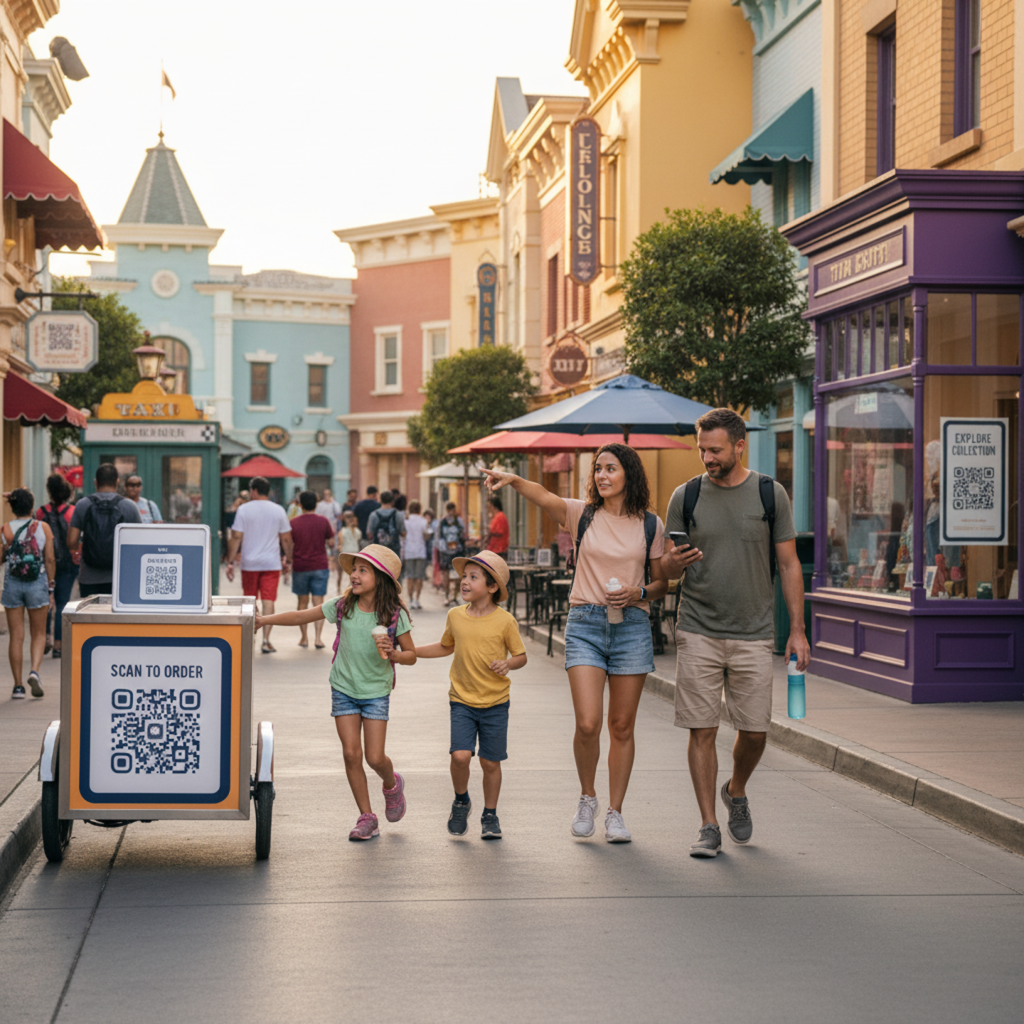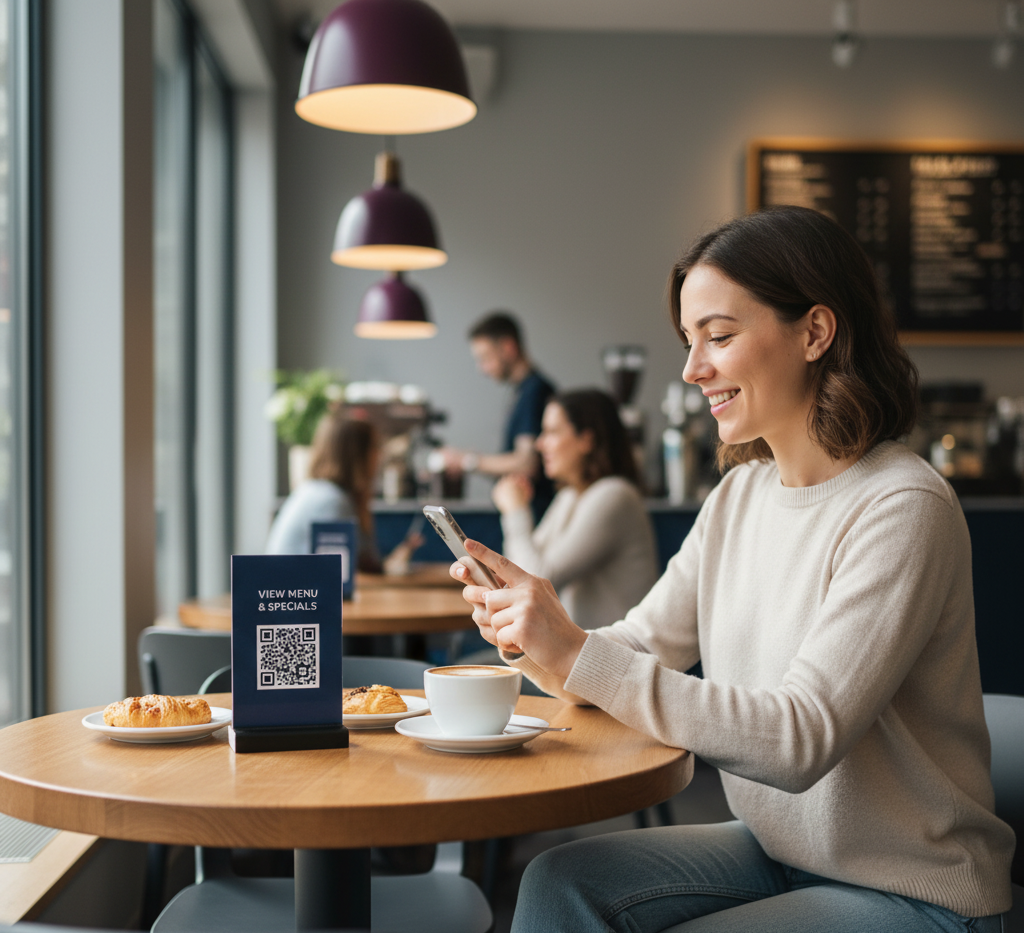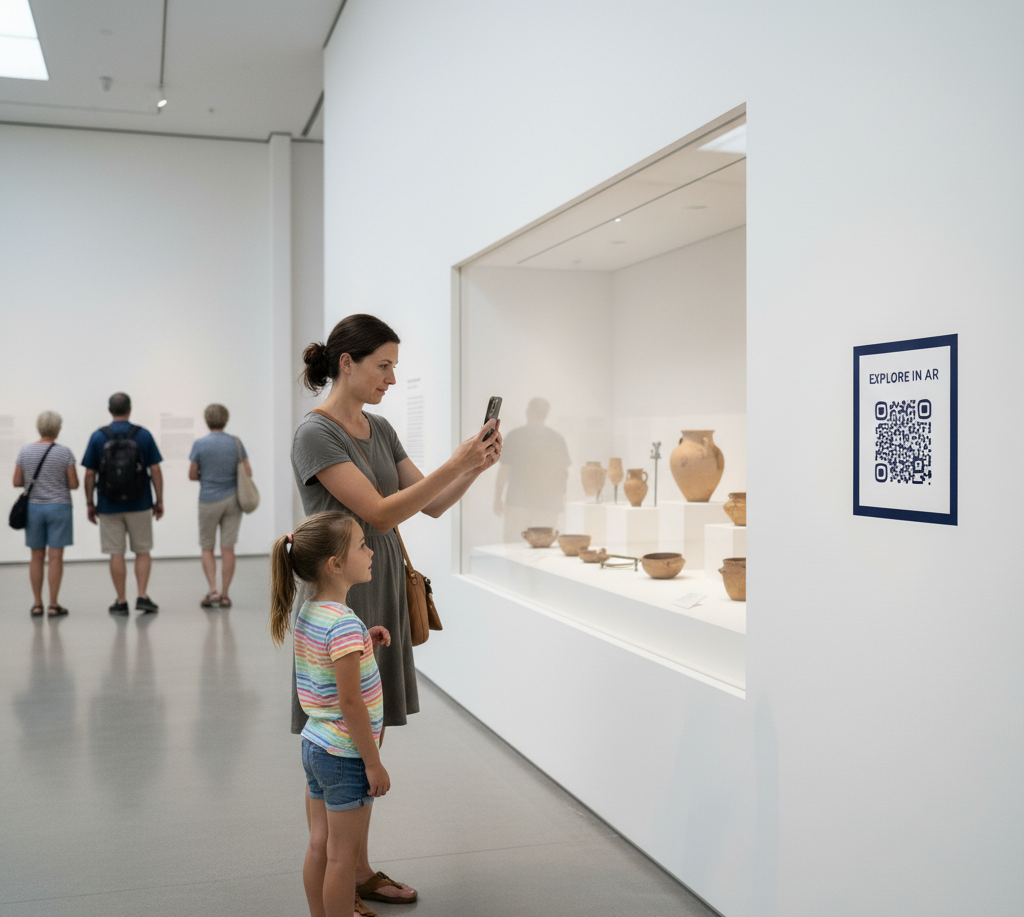QR Code Placement Strategies for Travel-Adjacent Brands

A family on vacation walks toward a theme park on a humid afternoon, balancing bags and bottled water. The kids drift toward an ice-cream cart while their parents shuffle between a printed map, the park’s website, and a board listing ticket prices. On the same street, a café waits for the post-lunch rush. A boutique next door sells themed merchandise. A taxi stand nearby lines up cars for the next group of visitors.
It’s a familiar pattern; travelers cross paths with multiple businesses long before they reach their destination, but only a few manage to hold their attention.
Travel no longer belongs only to airlines or hotels. Every person in motion, whether commuting to work or flying across continents, is part of what’s known as the traveler economy: a network of quick decisions and purchases that happen while people are in transit. When these touchpoints connect, they form a sense of continuity across a traveler’s journey.
According to Uniqode's analysis of QR Code placement for travel, these interactions span everyday settings: taxis, neighborhood cafés, hotel lobbies, and museums. Yet most brands treat them as random encounters rather than strategic touchpoints, missing opportunities to connect with travelers when they're most open to new experiences
Beyond flights and hotels: The economy in motion
The travel economy extends far beyond planes and check-ins. A single trip passes through dozens of local businesses, cafés, taxis, stores, and wellness centers. Each stop represents a moment when travelers make quick purchasing decisions while away from familiar routines.
Yet most non-travel and non-hospitality brands still design only for local customers and not people passing through. They miss opportunities when travelers are actually more open to trying new things—at unfamiliar restaurants, in hotel lobbies, or while waiting for rides.
This is where strategic placement of QR codes can bridge the gap, helping businesses connect with travelers at the exact moment decisions happen: at the table, in the cab, or at the counter.
Retail and F&B
For travelers, shopping and dining are rarely planned experiences. They happen in the in-between moments, grabbing coffee before boarding, stepping into a local shop near the hotel, or picking up a snack during a day trip. Yet these spontaneous interactions are often disconnected from any digital follow-up. Stores and cafés still rely on foot traffic visibility rather than intent, hoping passersby will notice a store sign or menu at the right time.
This is where most opportunities are lost. A traveler may be curious but not ready to commit. They might not want to open a browser, download an app, or search for details in a language they do not speak. The window between interest and action closes quickly, and the moment passes.
QR Codes can capture these fleeting opportunities. Placing it at the entrance, on a table, or even on a receipt can make browsing or buying immediate. Restaurants can use them to display digital menus and highlight specials, while boutiques can use them to share local product stories or collect quick sign-ups for future offers. The key is placing codes at natural pause points where travelers are already stopping to make decisions.

Public transit and rideshare
Transit represents significant downtime in most journeys. Whether in a city cab, airport shuttle, or metro line, travelers spend minutes or hours with little to do. Those moments of waiting or idle scrolling often trigger practical behaviors: looking up directions, searching for nearby restaurants, or checking flight details.
Yet ride-share and public transport systems typically fill available space with traditional signage or static ads, rather than connecting riders to useful, real-time content. Opportunities for helpful interaction go unused.
QR Codes can make that interaction happen. A scan on a ticket or a seatback can open route maps, curated playlists, or timely offers from nearby businesses. Ride receipts can provide access points for app downloads or digital tipping options, while codes on station walls can link to live schedules or service alerts. Placed with purpose, these codes add value during natural waiting periods without feeling intrusive.

Entertainment and culture
Cultural spaces are often where travelers slow down after a full day of traveling. Museums, theme parks, and historical sites hold their attention longer than airports or shopping streets. Visitors want to learn, capture, and share what they see. Yet many venues still rely on static boards and printed brochures.
Even when digital experiences exist, they’re often disconnected from the physical flow of the space. Visitors may have to search for an app or type a long URL to access information. The friction discourages engagement, especially for international travelers already dealing with language barriers.
QR Codes can eliminate this friction. A code beside an artwork or exhibit can unlock translations, audio guides, AR walkthroughs, or behind-the-scenes stories. Parks and cultural venues can use them to overlay narratives, show reconstructions, or reveal what the place looked like decades ago. The same code can guide visitors through maps, queue updates, or digital souvenirs.

Wellness and healthcare
For many travelers, comfort and reassurance matter as much as convenience. After long flights or road trips, small health and wellness touchpoints like pharmacies, spas, and gyms become part of recovery. But travelers face unfamiliar businesses with language differences, unfamiliar products, and unclear service details that often make them hesitate, even when they need quick solutions.
Health and wellness businesses tend to underestimate these moments. Pharmacies may display products without clear usage instructions, and spas often leave visitors guessing about treatments or pricing. Even when help is available, travelers are less likely to ask if the process feels uncertain or time-consuming. These gaps prevent valuable interactions from happening when travelers are most open to them.
QR Codes simplify that experience. Pharmacies can use them to link medicine packaging to dosage instructions or connect travelers to telehealth consultations. Spas and wellness centers can add them to menus and counters so guests can explore services, book appointments, or unlock personalized recommendations. When used thoughtfully, these touchpoints replace hesitation with confidence.

Everyday services
Between airports, hotels, and major attractions lies a layer of everyday businesses that quietly support travelers in transit. Neighborhood laundries, convenience stores, co-working spaces, and service kiosks see travelers daily but rarely view them as part of their audience. These businesses handle practical needs like printing, currency exchange, luggage storage, or workspace access.
Most of these services rely on visibility and chance. A traveler discovers them by walking past or asking for directions. Even when businesses are visible, travelers often lack key details about hours, availability, or pricing. The result is avoidable friction in situations where travelers want efficiency more than exploration.
QR Codes can address this disconnect. Placed in hotel lobbies or transport hubs, they can direct travelers to essential local services. At the business location, codes can provide instant access to hours, service menus, or digital payment options. Co-working spaces can use them to offer Wi-Fi access and bookings, while luggage counters can share storage terms and nearby transit links. Even small shops can display QR Codes that list neighborhood resources or emergency contacts. These simple connections make navigation faster for travelers while giving local businesses better visibility.

Designing for continuity
The travel industry understands something most others overlook: journeys extend beyond destinations. Airlines and hotels succeed by reducing friction at each step, from booking to boarding to arrival. Any business that encounters travelers can apply the same principle—anticipate needs and remove barriers before they appear.
This shift begins with observation: understanding how people move through physical spaces and when they're most likely to engage. A QR Code placed where travelers naturally pause (at tables, counters, or kiosks) can bridge the gap between curiosity and action.
When brands design with traveler flow in mind, small improvements add up. Travelers experience less friction, and marketers see clearer outcomes. In the traveler economy, the path matters just as much as the destination, so technology, like the QR Code, that can provide immediate value leads to the most successful interactions.
Ready to plan QR Codes that actually get scanned? Start free trial or Book a demo to see what’s possible.
